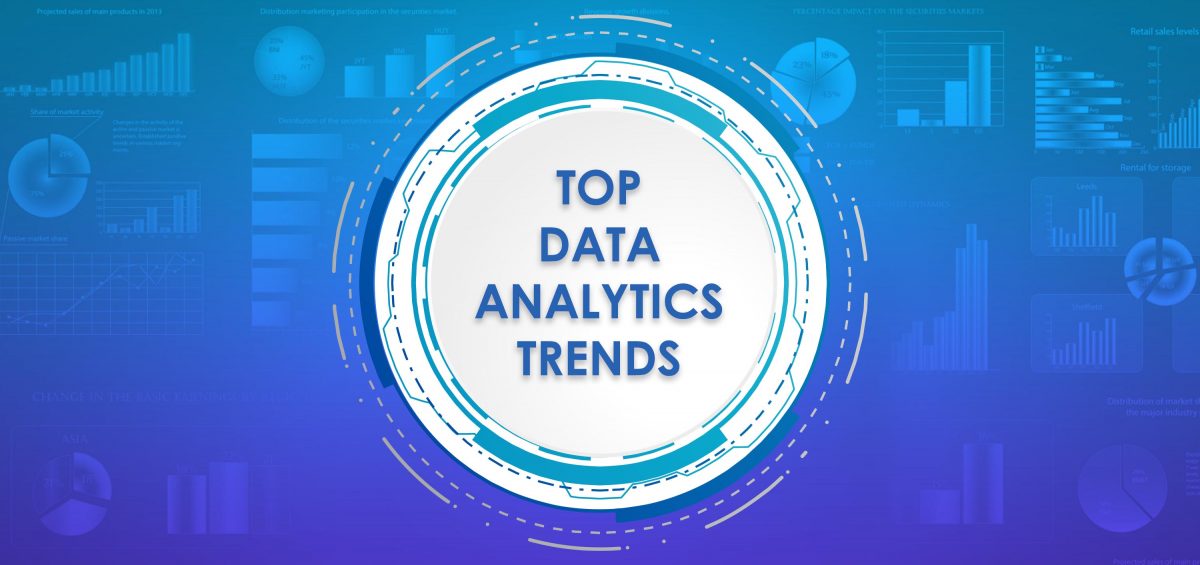Data Analytics helps in drawing out conclusions of the information received from the evaluation of raw data. Usually, the process of data analytics is carried out by taking data automatically from raw data sources, brushed and analyzed impartially, and communicated in a report using the ordinary language, which the humans can easily understand. Thus, businesses need to consider the new trends, which will set a trademark for data analytics in the coming years.
The vision of Data Analytics is considerably evolving with the advancement in the digital age, more quickly than ever before. As we eventually move forward in this digital era, the marketing/advertisement artists have understood the importance of data analytics in businesses to gain ample advantage from exclusive and separate data sources. The improved and advanced tools and solutions have changed Data Analytics enormously; however, as future trends can shed light on the company’s greatest potential value areas, there are plenty of opportunities to look forward to.
These five trends are bound to break the stereotypes and become a trademark for Data Analytics in the next decade.
- Real-time, data analytics and data visualization – The fast-paced flow of data and information will make real-time analytics’ visualization the chief priority of digital businesses. Beyond that, the modes of communication and its form-factors will become important. The officials/executives use the real-time data in making immediate sense of the whereabouts of certain hot spots, their development, which helps them in gaining direct resources in getting ahead. Also, the entire decision-making process will accelerate when visualizing the data on a map.
- Rise of Cloud-Native Enterprises – Countless associations and new companies have transferred their capabilities to cloud infrastructure. Organizations using analytical tools are gradually migrating to the cloud to achieve proficient business execution. Employing cloud-native applications can enable activities that will voluntarily enhance and improve business’ dexterity. This will ultimately lead to better execution, greater adaptability, and versatility to monitor development and unforeseeable needs.
- Automation of the Process – Automation of data analysis is significantly helpful when an organization manages big data. Numerous projects such as data preparation, exploration, replication, and maintenance of the data warehouse are accomplished using automated data analytics. It can also make decisions and create user input systems on behalf of large business partners/organizations.
- More meaningful and imperative data analysis and insights – Related data and its distributed location processing drive data analysis and insights. The purpose of distributed location processing is that it provides more meaningful and timely business insights. Businesses can arrive at robust conclusions once they are finished accessing the vast stores of data for the most relevant subset to a particular area of business.
- Strategic approach towards Data-as-a-Service – As businesses are seeking cloud transformation every day, data-as-a-service will become the most widely used solution. It will allow companies to access real-time data streams from anywhere in the world, with the ability to share data between departments within the company which is one of the biggest issues. Companies using data-as-a-service typically focus on organizing data and compiling it into useful data streams. The businesses will be able to transform their infrastructure and workloads with the help of data integration, management, storage, and analytics. Furthermore, data-as-a-service will remove the limitations caused by the internal data sources.
To wrap it up, the strategic and prolonged role of data and analytics is vastly increasing the intricacy of data, the required quantity of variables to analyze, as well as the types of analysis required for attainment. These data analytics technology trends will have significant disruptive potential over the next decade, therefore; the data and analytics leaders must examine their business impacts and adjust their operational and strategic methods accordingly.






